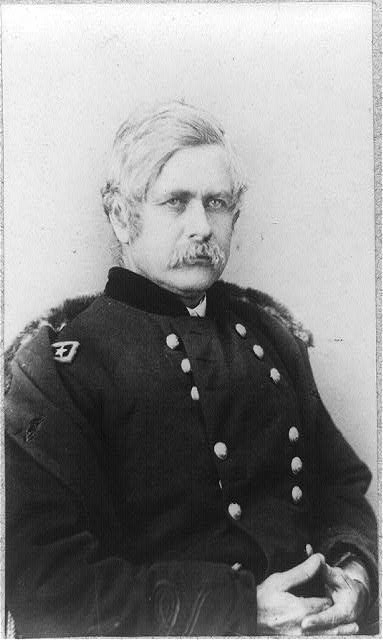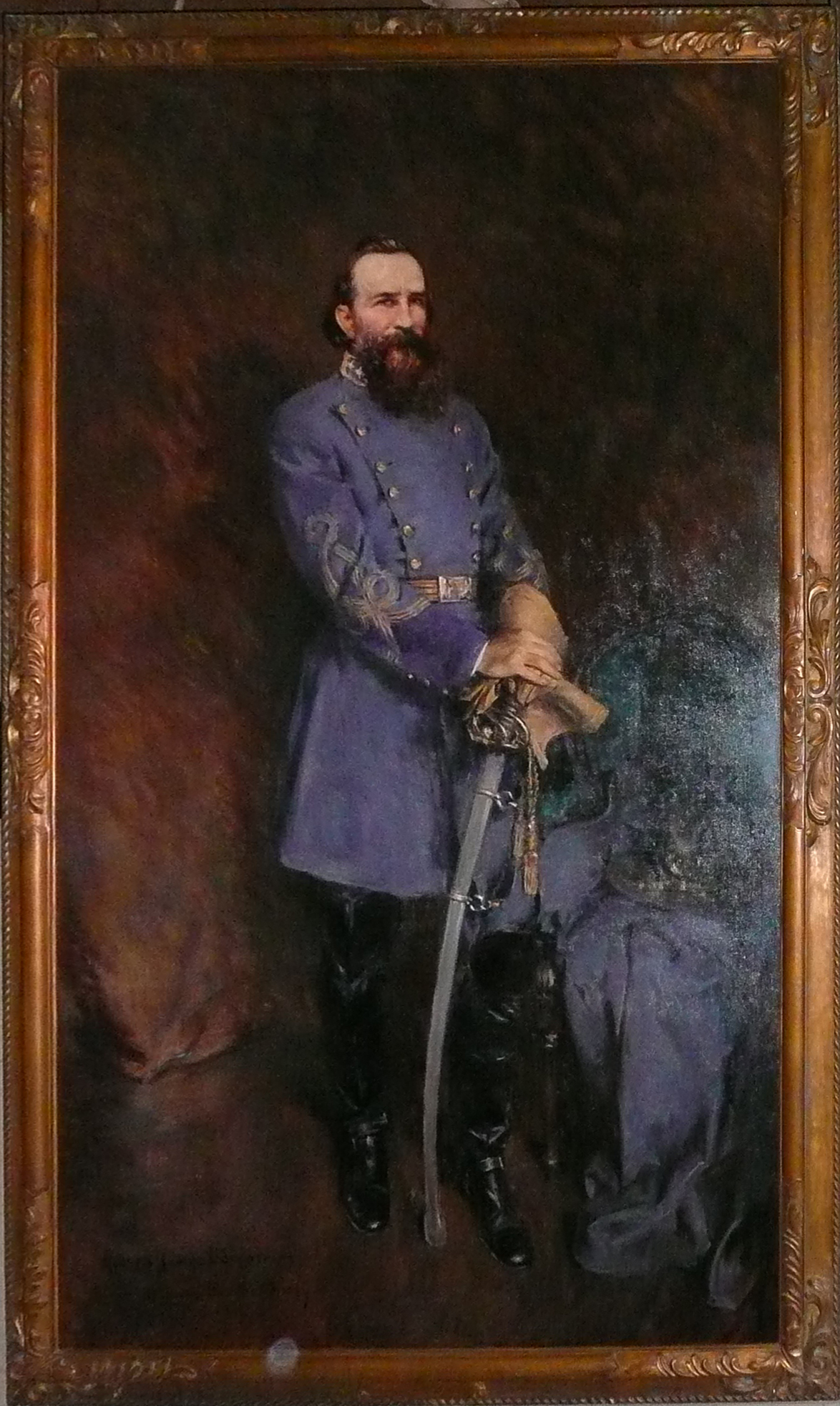A “Visionary” Plan? The Proposed March 1865 Peace Conference, Part 5

(Part 1, Part 2, Part 3, and Part 4 are available.)
In any event, on Tuesday, February 28, Longstreet and Ord met again purportedly to discuss prisoner exchanges, when Ord suggested that Lee should contact Grant and request “an interview, stating that General Grant was prepared to receive the letter, and thought that a way could be found for a military convention, while old friends of the military service could get together and seek out ways to stop the flow of blood.” Longstreet replied that the fighting had to stop before the Confederates could engage in peace negotiations. Ord readily agreed, which is surprising since Lincoln had opposed this condition when Stephens proposed it at Hampton Roads. Nevertheless, they parted with a more structured plan, albeit one that incorporated some verbal maneuvering to achieve their goal of peace. While “Ord was not ordinarily given to the use of guile to attain his ends,” according to Cresap, “it is not impossible that he would consider the present object so important that a bit of subterfuge was in order.”[1]
Shortly after this meeting, Grant sent a letter to Stanton updating him on the latest news from the southern papers. He ended it with a note from a North Carolina paper regarding a joint resolution in the Confederate House of Representations “approving the appointment of General Lee as general-in-chief . . . recommending that he be vested with power to treat for peace.” This was an important point for Grant to relay, especially if the idea of a military convention ever came to fruition.[2]

Meanwhile, on March 1, Longstreet sent a letter to General Lee apprising him of the latest meeting with Ord:
He acceded promptly to my proposition that the war must cease if we are to go to work to try to make peace, and to the proposal for a military convention. I further claimed that we could not go into convention upon any more favorable basis than an earnest desire to arrange plans for peace that should be equally honorable for both parties. To this also I understood him to give his unqualified consent. He says that General Grant has the authority to meet you if you have authority to appoint a military convention, and proposed that you should indicate your desire to meet General Grant, if you felt authorized to do so. . . . If you think it worth your time to invite General Grant to an interview, it might be upon some other as the ostensible grounds, and this matter might be brought up incidentally. I presume that General Grant’s first proposition will be to go into convention upon the basis of reconstruction; but if I have not misunderstood General Ord’s conversation, General Grant will agree to take the matter up without requiring any principle as a basis further than the general principle of desiring to make peace upon terms that are equally honorable for both sides.[3]
Following this update, Lee then wrote to Grant and Davis regarding the Ord-Longstreet exchange. First he reached out to Grant, and directly addressed the subject of organizing a military convention for peace negotiations:
Lieutenant-General Longstreet has informed me that, in a recent conversation between himself and Major-General Ord as to the possibility of arriving at a satisfactory adjustment of the present unhappy difficulties by means of a military convention, General Ord states that if I desired to have an interview with you on the subject you would not decline, provided I had authority to act. Sincerely desiring to leave nothing untried which may put an end to the calamities of war, I propose to meet you at such convenient time and place . . . with the hope that upon an interchange of views it may be found practicable to submit the subjects of controversy between the belligerents to a convention of the kind mentioned. In such event I am authorized to do whatever the results of the proposed interview may render necessary or advisable. . . .[4]

Lee instructed Longstreet to read the letter before sending it to Grant. But seeing that Lee presented a “direct request for a conference to consider definite articles of peace,” rather than providing some other pretext for a meeting, as Ord had done, Longstreet knew immediately that this “direct request” would “be fatal to the plan.” He recognized that Grant “had no right to consider such articles, and I knew him well enough to know that he would never assume an authority he did not have.” Hoping to “at least open the way for the proposed exchange of visits between our wives,” Longstreet suggested “that some other business should be named as the cause of the call for the interview.” Responding in a way that Longstreet believed was “characteristic” of his commander, Lee simply stated, “I am opposed to subterfuge or diplomacy and will give none but the real reason for our meeting.” Perhaps on second thought, however, he decided a second letter couldn’t hurt. And so Grant ultimately received two letters from Lee.[5]
Taking Longstreet’s advice, Lee provided an additional, strictly military purpose for meeting with Grant in his second letter. He mentioned that during the Ord-Longstreet exchange, Ord had “expressed some apprehension lest the general terms used by you with reference to the exchange of political prisoners should be construed to include those charged with capital offences. . . . Should you see proper to assent to the interview proposed in my letter of this date, I hope it may be found practicable to arrive at a more satisfactory understanding on this subject.”[6]
Lee did not hold out much hope for the meeting, however. In fact, after completing his letters to Grant, Lee informed Davis that he had offered to meet with Grant “in the hope that some good may result, but I must confess that I am not sanguine. My belief is that he will consent to no terms, unless coupled with the condition of our return to the Union. Whether this will be acceptable to our people yet awhile I cannot say.” Thus, while Grant firmly believed the southern people were ready for peace, Lee, on the other hand, was not so sure.[7]
To be continued…
[1] Longstreet, From Manassas to Appomattox, 585; Cresap, Appomattox Commander, 168.
[2] U.S. Grant to Edwin M. Stanton, March 2, 1865, The War of the Rebellion, Series I, 46(2), 783.
[3] Longstreet, From Manassas to Appomattox, 647-648.
[4] Longstreet, From Manassas to Appomattox, 585-586.
[5] Burr, “Grant to Longstreet”; Longstreet, From Manassas to Appomattox, 586; Burr, “Grant to Longstreet.”
[6] Longstreet, From Manassas to Appomattox, 586.
[7] Robert E. Lee to Jefferson Davis, March 2, 1865, The Wartime Papers of R.E. Lee, 911.
1 Response to A “Visionary” Plan? The Proposed March 1865 Peace Conference, Part 5